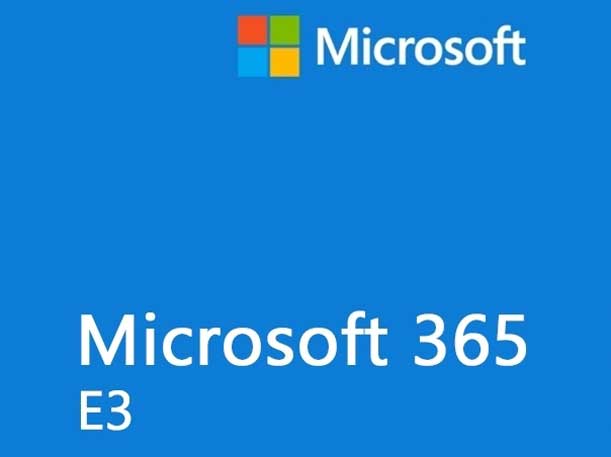Microsoft Q4 Earnings: 7 Big Takeaways
Microsoft ultimately beat analyst expectations across a variety of measures but provided little future guidance.

A lack of guidance for the new fiscal year. Meaningful sales from generative AI and copilots not coming until wintertime. And signs of enterprise spending improving.
These are some of the highlights from Microsoft’s quarterly earnings call Tuesday, according to a review of analyst notes by CRN.
The Redmond, Wash.-based vendor ultimately beat analyst expectations across a variety of measures, including total revenue, Azure revenue growth, Microsoft Cloud revenue and Office 365 revenue.
[RELATED: Microsoft Q4 Earnings: ‘Aggressive’ Spending, ‘Gradual’ AI Services Growth]
MSFT Q4 Results
But the vendor’s stock was still down about 3 percent since the start of Tuesday’s earnings call – which reported results for the fourth fiscal quarter quarter and fiscal year ended June 30.
Other takeaways from the earnings call include:
*Upselling and renewal activity
*PC market continues to hurt
*What It Means For Google, AWS
Here’s what else we learned from Microsoft’s latest earnings call.

Lack Of Guidance
Microsoft’s lack of predictions for fiscal year 2024 may concern investors, according to a Morgan Stanley report Wednesday. But the firm remains confident in Microsoft as “the long-term leader in AI” with “a solid leadership position ahead of a large AI-driven tech cycle.”
“While the excitement of Microsoft’s solid positioning for Generative AI was clearly palatable in management’s commentary and the expectations for ramping capex (capital expenditures) growth to support this demand, the lack of direct commentary on FY24 revenue growth left some investors wondering what they’re missing,” according to the Morgan Stanley report.
The report called concerns “much ado about nothing,” and listeners “following the management’s bread crumbs through the conference call leads to an equation of expanding share gains” and accelerating revenue growth, according to the firm.
Morgan Stanley reported that it believes Microsoft declined to give fiscal year 2024 guidance because “the company looks to tighten their longer-term (one year) forecasting more squarely on elements they have more control over” after the economy spoiled double-digit growth guidance for fiscal year 2023.
“Bottom-line, the lack of hand holding does not diminish our confidence in Microsoft’s positioning for Generative AI, nor their ability to accelerate revenues into solid double-digit territory in FY24. Rather, the aggressive ramp in capex suggests a potentially stronger demand curve for Generative AI versus what we’ve already embedded in our model,” according to Morgan Stanley.
The firm still predicts double-digit growth for Microsoft in fiscal year 2024.
In its own report, Bank of America attributed the lack of fiscal year 2024 guidance “to moving parts with regard to AI contribution.”
In a KeyBanc report Wednesday, the firm took a lower first fiscal quarter revenue guidance and no full year guidance to mean that “visibility into FY24 and the timing of an Azure growth trough is less than hoped.”

AI Opportunity Ahead
The 11,000 enterprises on Azure OpenAI Service is the start of “a massive golden opportunity ahead for Redmond,” according to a Wedbush report issued after the call. Microsoft reported 2,500 customers the prior quarter.
Although Microsoft’s stock is down about 4 percent since the earnings call – trading at about $335 a share Wednesday morning Pacific Standard Time and erasing the stock bump Microsoft saw after announcing the $30 per month per user price tag for Microsoft 365 Copilot – Wedbush described a modest selloff due to the “gradual” AI ramp this fiscal year.
“FY25 remains the true inflection year of AI growth with pricing, beta customers, and use cases all being rolled out over the next 3 to 6 months,” according to the Wedbush report. The firm believes that half of Microsoft’s global installed base could adopt AI over the next three years.
The Morgan Stanley report noted a lack of surprise for Microsoft to see meaningful AI revenue numbers closer to the winter. The firm’s surveys have suggested “broad initial interest in Generative AI, but little near-term budget impact.”
Morgan Stanley expects Microsoft 365 Copilot to become generally available early in Microsoft’s third fiscal quarter, in spring 2024.

More Infrastructure Spending
Despite the increased spending from Microsoft to meet AI demand, “operational expenditures discipline should allow the company to achieve non-GAAP operating margin of 42% in fiscal 2024 (in line with fiscal 2023),” according to William Blair.
“We remain confident in Microsoft’s growth outlook, especially as the company ramps up its generative AI capabilities and introduces new monetization opportunities (across Copilots, Bing/Edge, and Azure,” according to William Blair.
Morgan Stanley still underestimated Microsoft CapEx despite raising estimates twice in the past 90 days, according to the firm’s report. Microsoft reported CapEx of $10.7 billion, up 23 percent year over year.
Morgan Stanley and KeyBanc expect fiscal year 2024 CapEx of $50 billion, up 57 percent year over year. Morgan Stanley previously expected $41 billion in CapEx.
“While this ramp in capex puts incremental pressure on gross margins in the near-term – we lower our FY24 estimates by 100 bps – more broadly we view the capex ramp as a positive signal of the demand Microsoft is seeing for their Generative AI solutions,” according to Morgan Stanley.
On the call, Nadella said that the CapEx is “replacement capital plus some new capital that is going to drive new growth … And we feel good about that structure of overall growth rates and how it translates into future TAM (total addressable market) opportunity for us.”
Bank of America predicts Microsoft will spend 17 percent of its revenue in fiscal year 2024 on CapEx compared to 13 percent the prior year.
“We view this investment as reasonable given the potential for contribution to both Azure and O365 growth,” according to the firm. Microsoft’s expectation to expand margins “is impressive in a year where cost of sales is ramping and a testament to Microsoft’s massive operational/opex scale.”

Azure Growth
William Blair reported “strong performance in Microsoft Cloud” with a 23 percent increase in revenue year over year and “signs of stabilization in its Azure business” with a 27 percent increase.
“Trends around platform consolidation, shift to cloud, and AI are driving more customers to Microsoft and increasing the company’s enterprise wallet share,” according to the report.
Azure saw a deceleration from the prior quarter’s 31 percent growth, but guidance of 25 percent growth next quarter should be “seen as a positive sign that demand trends are stabilizing and headwinds from cloud optimization have become less intensive.”
“Azure AI services accounted for one percentage point of growth in the quarter and are expected to contribute two points of growth in the first quarter as Microsoft ramps up its capabilities here and as enterprises look to build new AI capabilities into every aspect of
their business,” according to William Blair.
Morgan Stanley agreed, saying that Azure’s “slope of deceleration has already moderated considerably” and Azure growth ahead “suggests further stabilization into 1Q24, continuing the trend line seen in prior guides.”
Microsoft’s enterprise and mobility seat growth saw notable deceleration, falling from 15 percent year over year in the third fiscal quarter to 11 percent in the fourth quarter with an estimated drop in net seat adds from 8 million to 6 million, according to Morgan Stanley.
On the call, CEO Satya Nadella said that the $60 billion-plus revenue run-rate business is only in its second or third inning.
A record number of $10 million-plus deals for Azure and Microsoft 365 in the fourth quarter shows “the strategic nature of both these products and the strong demand trends that should underpin sustained growth across both segments,” according to William Blair.
“Overall, performance in the fourth quarter and management commentary supported the thesis that the trend toward public cloud remains robust—and beginning to benefit from new tailwinds around AI—and that cloud will continue to be the major driver of growth for
the company going forward,” according to William Blair.
According to Morgan Stanley, Azure revenue contribution from AI moving from a point to two points in a quarter “implies that the run rate of the AI businesses within Azure jumped from ~$500 million run rate to >$1 billion run rate over the last three months.”

Upselling, Renewal Activity
William Blair noted that the 12 percent sales growth in Microsoft’s productivity and business processes segment—which includes Office Commercial, Office Consumer, LinkedIn and Dynamics—implied limited seat degradation and “continued growth opportunities in the midmarket and with frontline workers” plus average revenue per user growth with “solid renewal activity and upsell to E5 licenses at renewal.”
Renewals and upsells can come due to actions from Microsoft solution providers.
“With Microsoft continuing to improve the breadth of its suites offerings with security, collaboration, and voice licensing included at this higher E5 tier, many customers are choosing to consolidate their spending with Microsoft and replace the myriad point solutions bought in 2021/2022,” according to William Blair.
The $30 per user per month pricing for Microsoft 365 Copilot on top of existing payment plans will increase ARPU once M365 Copilot is generally available (GA).
“We expect similar add-on pricing to be disclosed for its security Copilots (early access expected in the Fall) as well as its new SSE offering announced this month, which should add to the growing list of TAM [total addressable market] expansion opportunities for the company,” according to William Blair.

PC Market Hurting
Microsoft reported continued hits to PC sales with slow demand, with its “more personal computing” (MPC) division reporting decreased revenue of 3 percent – better than expected.
But according to the William Blair report, “We believe demand is close to bottoming-out here.”
“With Windows 10 end-of-support in 2025, we expect that the necessary upgrade cycle will coincide with improving PC demand conditions in calendar 2024,” according to William Blair.
Lower MPC expectations for this current quarter – which would mean revenue between $125 billion and $12.9 billion compared to Wall Street expectation of $13.2 billion – pushed first fiscal quarter guidance $740 million below what Wall Street expects.
Microsoft predicts total revenue growth of 8 percent year over year this current quarter to about $54 billion compared to Wall Street’s expected $55 billion.
“Generally, management expects many of the same trends it saw in the last two quarters to continue into the first quarter,” according to William Blair.

Competition Comparison
Tuesday saw dueling earnings between Microsoft and its generative AI and cloud rival Google.
Bank of America reported that stable Google Cloud growth of 28 percent quarter over quarter “compared favorably” with Azure’s deceleration quarter over quarter from 31 percent to 27 percent.
That stable Google growth came “despite ongoing client spend optimization suggesting industry Cloud spend is firming up,” according to the report.
Google also told listeners that it expects CapEx to grow in the second half of 2023 and in 2024. Bank of America raised its Google 2024 CapEx estimate by $2.2 billion, representing 14 percent growth to $36.6 billion.
Bank of America saw the results for Google Cloud and Microsoft Azure as neutral to positive for No. 1 cloud vendor Amazon Web Services. The firm expects AWS revenue in its second fiscal quarter to decelerate by six points quarter over quarter to 10 percent, reflecting stabilization compared to the April quarter.
Amazon reports second quarter earnings Aug. 3.